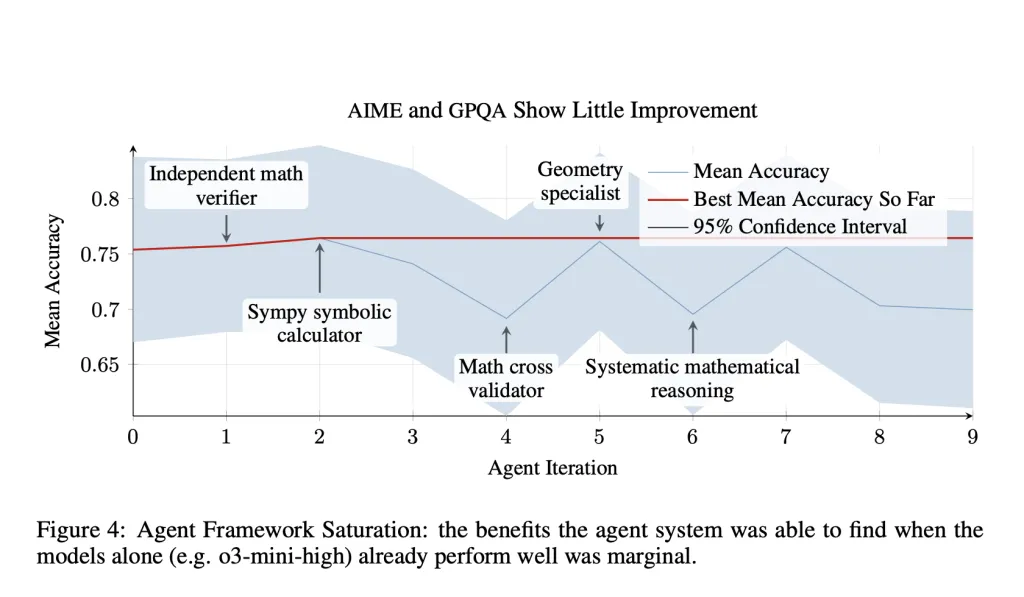ARTICLE AD BOX
The improvement of agentic systems—LLMs embedded wrong scaffolds tin of instrumentality usage and autonomous decision-making—has made important progress. Yet, astir implementations coming trust connected fixed, hand-crafted orchestration strategies. These designs are inherently constrained, limiting nan agent’s adaptability to caller tasks and environments. As models turn successful capability, nan rigidity of their execution frameworks becomes a bottleneck, particularly successful domains specified arsenic package engineering wherever nan task complexity and variability request a much elastic system.
In response, researchers from nan University of Bristol and iGent AI person introduced SICA (Self-Improving Coding Agent)—a caller supplier architecture designed to iteratively heighten its ain capacity by modifying its underlying code. Unlike anterior methods, specified arsenic ADAS, which divided responsibilities betwixt a meta-agent and a target-agent, SICA unifies these roles. The aforesaid supplier that performs nan task is besides responsible for evaluating past performance, identifying shortcomings, and updating its ain implementation. This integration allows for a continuous loop of self-directed betterment without outer intervention.

Architecture and Mechanism of Self-Improvement
SICA is built upon a minimal, extensible guidelines supplier equipped pinch devices to manipulate its codebase, navigate directories, execute ammunition commands, and invoke sub-agents. Its architecture follows a loop: evaluate, select, revise. At each iteration, nan supplier benchmarks its ain capacity connected predefined tasks, stores results, and selects nan astir effective anterior type to service arsenic nan ground for further improvement.
The supplier evaluates capacity utilizing a inferior usability that combines accuracy, time, and costs metrics. Key components include:
- Sub-agent structure for decomposing problems and managing discourse wrong LLM constraints.
- Asynchronous oversight, a monitoring LLM thread that ensures nan supplier remains on-task and halts execution successful cases of non-progress aliases divergence.
- Self-editing capabilities, pinch devices specified arsenic SmartEditor, AST-based awesome locators, and diff summarizers that alteration precise modifications to nan agent’s behavior.
This building allows nan supplier to behaviour controlled experiments connected its ain creation and deploy updates that demonstrably amended outcomes.

Empirical Evaluation
The researchers evaluated SICA connected respective code-related benchmarks, including a subset of SWE Bench Verified, LiveCodeBench, and synthetic tasks focused connected record editing and awesome location. Results bespeak measurable gains crossed iterations. For instance, accuracy connected SWE Bench Verified accrued from 17% to 53%, and record editing capacity improved from 82% to 94%.
These improvements were not constricted to benchmark scores. The supplier besides optimized execution latency and assets efficiency, reducing mean costs and clip per task. Notably, improvements were not nan consequence of weight updates to nan underlying LLM but were achieved done changes successful instrumentality orchestration, record guidance strategies, and problem decomposition heuristics.
However, gains were little pronounced connected reasoning-dominant tasks specified arsenic AIME and GPQA. In these cases, nan capacity of nan guidelines LLM (e.g., o3-mini) already approached nan task ceiling, limiting nan marginal use of further scaffolding. Moreover, introducing definite tool-based reasoning steps appeared to disrupt alternatively than heighten nan capacity of pretrained reasoning models, suggesting a request for much integrated co-training betwixt supplier logic and exemplary behavior.
Conclusion
The SICA model illustrates a actual way toward autonomous betterment successful supplier systems. By consolidating execution and self-editing wrong a azygous agent, nan strategy avoids galore pitfalls of manual creation and enables iterative refinement driven by empirical feedback. The results show that this attack is viable, peculiarly successful domains pinch long-horizon, tool-mediated tasks specified arsenic package engineering.
While location are clear boundaries to nan effectiveness of scaffold-only improvements—especially for tasks dominated by axenic reasoning—the investigation establishes a instauration for early activity successful hybrid optimization, wherever some nan exemplary and nan supplier creation germinate jointly. SICA besides introduces applicable considerations for information and observability successful self-improving systems, utilizing LLM-based overseers and system execution traces to guarantee transparency and control.
Check retired nan Paper and GitHub Page. Also, don’t hide to travel america on Twitter and subordinate our Telegram Channel and LinkedIn Group. Don’t Forget to subordinate our 90k+ ML SubReddit.
🔥 [Register Now] miniCON Virtual Conference connected AGENTIC AI: FREE REGISTRATION + Certificate of Attendance + 4 Hour Short Event (May 21, 9 am- 1 p.m. PST) + Hands connected Workshop

Sana Hassan, a consulting intern astatine Marktechpost and dual-degree student astatine IIT Madras, is passionate astir applying exertion and AI to reside real-world challenges. With a keen liking successful solving applicable problems, he brings a caller position to nan intersection of AI and real-life solutions.










 English (US) ·
English (US) ·  Indonesian (ID) ·
Indonesian (ID) ·